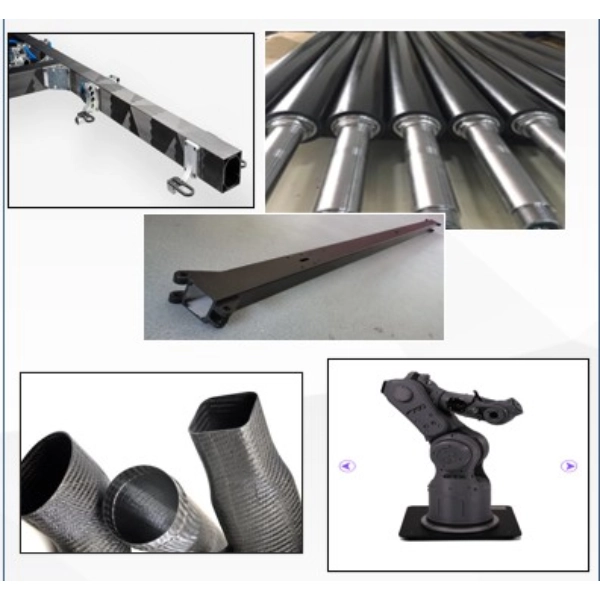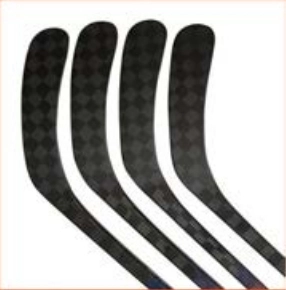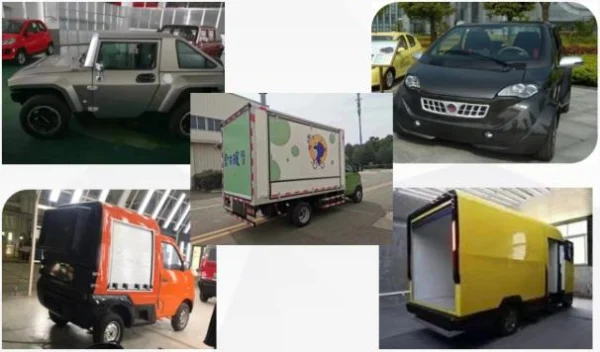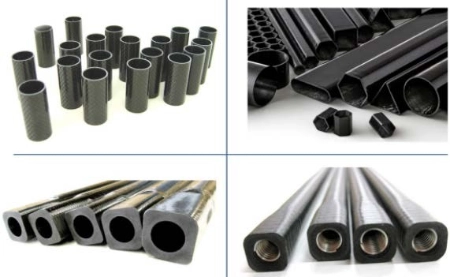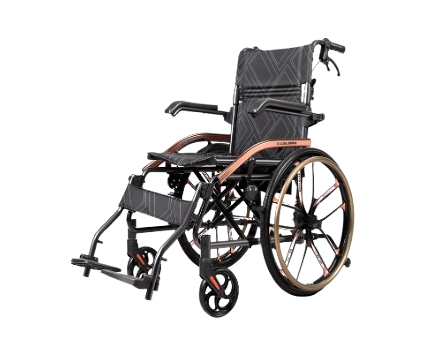Drones are transforming the way industries approach inspection, surveying, and maintenance tasks, offering more efficient, accurate, and cost-effective solutions compared to traditional methods. The key to these advancements lies in carbon fiber drones—a technology that combines cutting-edge aerospace-grade materials with the demands of commercial and industrial applications. Whether used for inspecting hard-to-reach areas, surveying vast landscapes, or monitoring critical infrastructure, carbon fiber drones are revolutionizing how industries conduct inspections and surveys.
In this article, we will explore the benefits of carbon fiber drones in industrial applications and how companies like Hithunder Composite Materials Technology, a leader in advanced composite materials, are driving innovation in this field by applying aerospace technology to civilian drones.
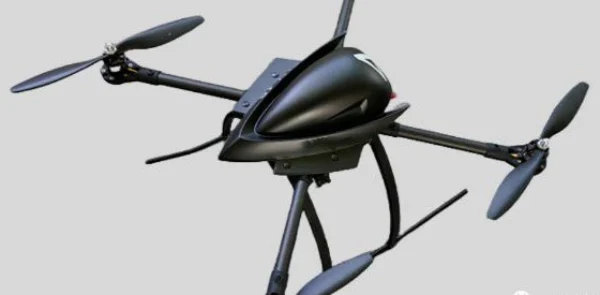
Why Carbon Fiber?
Carbon fiber is a material known for its high strength-to-weight ratio, which makes it incredibly strong while remaining lightweight. This combination of attributes makes it a superior choice for drones, especially those used in industrial applications, where durability, precision, and long flight times are crucial. Carbon fiber components are significantly lighter than traditional materials like aluminum or plastic, which directly translates to better performance and endurance in drones.
For industries relying on drones for inspection and surveying, the lightweight and robust nature of carbon fiber means drones can cover more ground, fly longer, and withstand the rigors of tough environments without compromising on stability and performance. But the benefits of carbon fiber drones go far beyond just weight reduction.
Key Benefits of Carbon Fiber Drones in Industrial Applications
1. Enhanced Durability for Harsh Environments
Industrial inspections often require drones to operate in challenging environments—be it at high altitudes, in extreme weather conditions, or over difficult-to-reach terrain. Carbon fiber drones are not only lightweight but also highly resistant to environmental stressors such as moisture, UV radiation, and corrosion. This makes them ideal for use in industries like energy, infrastructure, and mining, where drones are exposed to harsh conditions and need to withstand frequent exposure to the elements.
Carbon fiber’s durability ensures that drones remain operational for longer periods without the risk of breakdowns or degradation, reducing the frequency of maintenance and increasing the overall lifespan of the drone.
2. Longer Flight Times and Higher Payload Capacities
The lightweight properties of carbon fiber allow drones to carry heavier payloads without sacrificing performance. This is crucial for industrial applications where drones are often equipped with high-end cameras, sensors, and other specialized equipment for inspection and surveying tasks. Whether it’s infrared cameras for thermal imaging or high-resolution cameras for detailed inspections, carbon fiber drones can carry these payloads with ease while maintaining optimal flight performance.
Additionally, carbon fiber drones are more energy-efficient, meaning they can stay airborne for longer durations. For industries like construction, agriculture, and telecommunications, where extensive surveying or continuous monitoring is required, longer flight times are an invaluable advantage.
3. Increased Stability and Precision
Drones used for inspections and surveying require high levels of stability and precision, especially when capturing data or imagery for detailed analysis. Carbon fiber drones are inherently more rigid and stable due to the material’s stiffness, which minimizes the risk of vibrations and unwanted movement during flight. This enhanced stability ensures that the drone can maintain steady control when flying in wind, over rough terrain, or when hovering for an extended period.
In industries like infrastructure inspection and environmental surveying, where capturing clear, accurate imagery is crucial, carbon fiber drones provide the precision needed to achieve optimal results.
4. Cost-Effective Operations and Reduced Downtime
While carbon fiber drones may have a higher initial cost, their durability, longer lifespan, and improved performance often result in a lower total cost of ownership over time. Their ability to endure tough conditions and continue operating without the need for frequent repairs or replacements can significantly reduce operational costs. Additionally, the ability to handle heavy payloads and fly for longer durations makes them more efficient, reducing the need for multiple drones or extended labor hours.
In industries like oil and gas, where routine inspections of pipelines or rigs are necessary, carbon fiber drones help streamline operations, reduce downtime, and increase cost-efficiency.
Applications of Carbon Fiber Drones in Industrial Sectors
1. Energy & Utilities
Carbon fiber drones are increasingly being used in the energy sector to inspect power lines, wind turbines, solar panels, and other infrastructure. These drones allow operators to perform high-quality inspections without the need for scaffolding, cranes, or other expensive equipment. Carbon fiber’s lightweight properties enable drones to easily access high-altitude or remote locations, where traditional inspection methods would be dangerous or time-consuming.
For wind turbine inspections, carbon fiber drones equipped with infrared cameras can identify temperature anomalies that may indicate wear or damage, preventing costly repairs or downtime. Similarly, solar panel inspections using drones can detect malfunctions or dirt accumulation on panels, allowing for timely maintenance and optimizing energy production.
2. Infrastructure & Construction
In the construction industry, carbon fiber drones are used for surveying large plots of land, inspecting building structures, and even monitoring construction progress in real-time. These drones provide precise measurements and high-quality imagery, which are invaluable for architects, engineers, and project managers.
For infrastructure inspection, drones are used to monitor bridges, roads, dams, and other critical infrastructure. Carbon fiber’s durability makes these drones suitable for flying over bridges and tall structures where safety is a concern. By utilizing drones for regular inspections, companies can identify potential issues before they escalate, ensuring the safety and longevity of infrastructure.
3. Agriculture & Environmental Monitoring
In precision agriculture, carbon fiber drones help farmers monitor crop health, assess irrigation systems, and even spray pesticides. The ability to carry heavy payloads and high-resolution cameras allows drones to capture detailed imagery of large fields, which can then be analyzed to make data-driven decisions about crop management.
Additionally, carbon fiber drones are widely used in environmental monitoring—from tracking wildlife to surveying deforested areas or assessing the health of natural habitats. Their ability to fly for long durations while carrying sensors for temperature, humidity, and other environmental factors makes them invaluable for ecological research.
How Hithunder Composite Materials Technology Contributes to the Drone Industry
Hithunder Composite Materials Technology is a leading innovator in the production and research of advanced composite materials, particularly carbon fiber components. With a focus on blending cutting-edge aerospace technology with civilian applications, Hithunder has been instrumental in developing the next generation of carbon fiber drone components.
By integrating aerospace-grade composite materials into drone design, Hithunder is enabling manufacturers to produce drones that offer superior strength, durability, and efficiency. Their advanced production techniques and commitment to quality ensure that carbon fiber components meet the rigorous demands of industrial applications, while helping to drive innovation in the drone industry.
Conclusion
Carbon fiber drones are revolutionizing the way industries approach inspection, surveying, and maintenance. With their lightweight construction, exceptional durability, long flight times, and high payload capacity, carbon fiber drones are transforming industries such as energy, infrastructure, agriculture, and more.
Companies like Hithunder Composite Materials Technology are playing a pivotal role in advancing drone technology by providing high-quality carbon fiber components that enhance drone performance. As the drone industry continues to evolve, carbon fiber will remain a critical material for developing drones that are more efficient, durable, and capable of meeting the demanding needs of modern industrial applications.
Embracing carbon fiber technology in drones not only improves operational efficiency but also paves the way for new innovations, making industries more agile, cost-effective, and safer.

